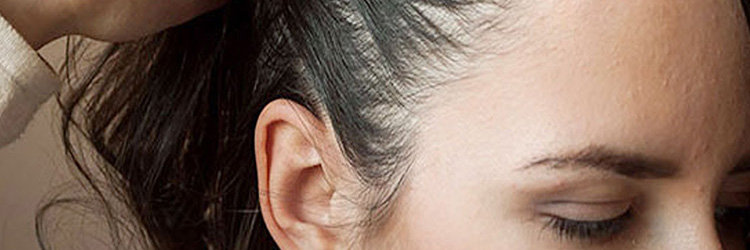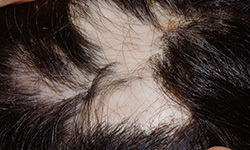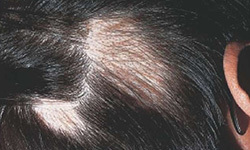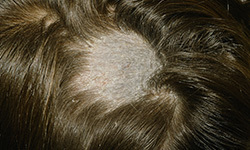An unusual form of permanent hair loss of the scalp, Pseudopelade is an unusual condition in middle-aged and older women. It’s a scarring alopecia (female pattern baldness) that is characterized by discrete asymptomatic areas of scalp hair loss. The cause of this condition is unknown, and recent studies have demonstrated that pseudopelade is slowly progressive, and in some cases, can worsen during periods of no activity.
Pseudopelade: An Overview
The term “pseudopelade” was first used by a French dermatologist, Louis-Anne-Jean Brocq, back in 1888 to describe a distinct form of cicatricial alopecia. It is a pattern disease that can be found in end-stage discoid lupus erythematosus (DLE), lichen planopilaris, and other versions of cicatricial alopecia. The symptoms of pseudopelade resemble the afore-mentioned conditions so much, that doctors often argue that this condition is, in fact, exactly like DLE and lichen planopilaris.
There is not a lot of research that backs up the causes behind pseudopelade. Medical experts claim that it could either be an auto-immune disorder or purely a result of genetics. The gender ratio for individuals who suffer from this rare condition is three women to every man, which is why this pattern of disease is known to be more common in females.
Pseudopelade: Diagnosis
Given that the condition is shrouded in mystery, doctors recommend skin biopsy to achieve a positive diagnosis. In its early stages, pseudopelade can show physical symptoms in the form of irregular shaped patches of alopecia, inflammation of the scalp, shrinking hair follicles, loss of fat glands, and a general loss of hair.
The older the individual is, the more the hair sheds for several years, before the condition stops permanently. Since the hair follicles in the affected area have ceased to regenerate, the skin is left shiny and returns to its normal color once the condition stops.
Pseudopelade: Cures & Treatments
If you’re experiencing excessive shedding, a visit to a dermatologist/trichologist should be the first course of action. Since little is known about pseudopelade, the condition can be challenging to treat. Even with treatment, the goal is usually to stop the disease, rather than reversing the hair loss. Unfortunately, hair regrowth in the bald areas is next to impossible in most cases.
For stopping the disease, your doctor may recommend one or more of the following, depending on how severe your case is:
– Oral medication such as Plaquenil, Doxycycline, and Mycophenolate mofetil
– Hair transplantation
– Topical creams containing Tacrolimus or Clobetasol
– Steroid injections
– Surgery may be recommended to hide the affected patch (only once the condition is inactive)
It is advised that you let your doctor carefully monitor the disease throughout the course of treatment. The doses and medications can be reduced or increased based on how your body reacts to the medication.
Wish to know more about pseudopelade? Sign up today on www.skinandhairacademy.in, and book an appointment with a reputed dermatologist/trichologist in your area!

















